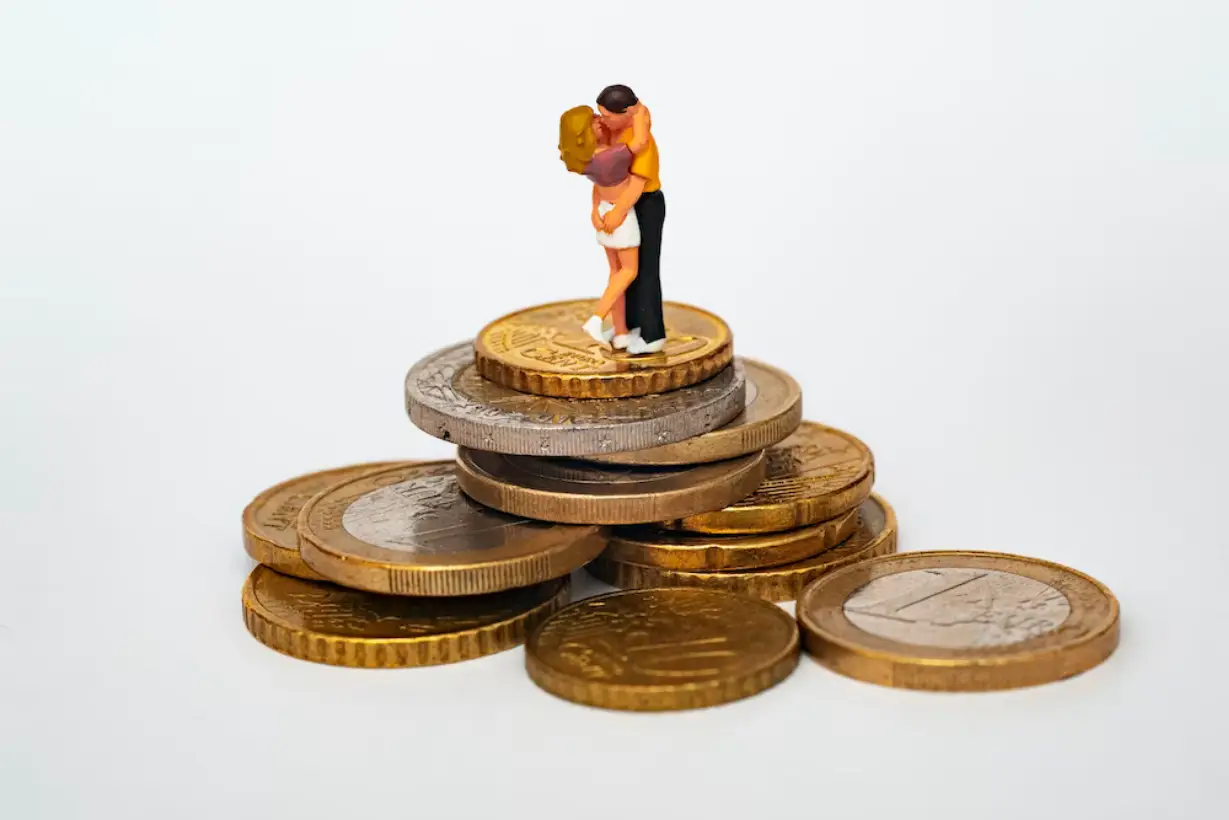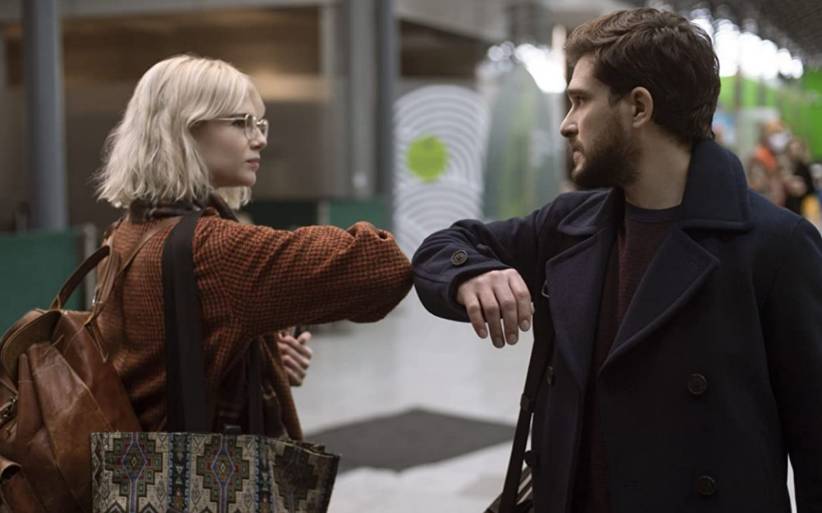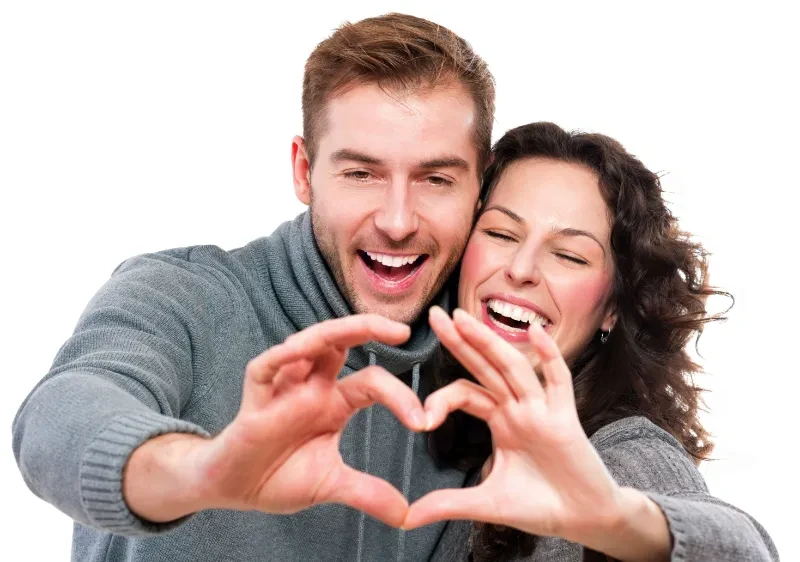- 0 Comments
- Views 48
- The Science of Attraction and Body Language
- Eye Contact: The Window to Romantic Interest
- Reading the Signals: What Prolonged Eye Contact Means
- The Fine Line Between Intensity and Comfort
- The Subtle Art of Touch: Interpreting Physical Connections
- Casual Touches and Their Romantic Implications
- Respecting Boundaries: Understanding the Unspoken Rules
- Expressions of the Heart: Smiles, Laughs, and Gestures
- The Truth Behind His Smile: Genuine Happiness or Polite Facade?
- Laughter in Love: How Humor Builds Bonds
- The Unspoken Dialogue of Posture and Positioning
- Mirroring Movements: The Dance of Synchronization
- Body Orientation: Subtle Signs of Affection
- Pupil Dilation: The Eyes Tell More Than Words Could
- The Science of Pupil Response in Attraction
- Eye Contact and Emotional Connection
- Frequently Asked Questions About Body Language and Attraction
- How can eye contact indicate someone’s romantic interest?
- What facial expressions typically suggest a man is attracted to a woman?
- Can the tone of someone’s voice reveal their feelings of attraction?
The Science of Attraction and Body Language
The dance of attraction is not just a metaphor—it’s a tangible interplay rooted in our biology and psychology. The scientific basis of attraction is a multifaceted melody composed of biological, psychological, and social threads. Body language is the subtle yet powerful conductor of this melody, guiding the rhythm of romantic interactions without a single word.
From an evolutionary lens, our gestures and postures are echoes of primal communication—signals of health, fertility, and genetic compatibility. It’s the open stance, the unfolding arms, and the attentive gaze that whisper of availability and interest, pulling us towards a potential mate.
But it’s not just about primal instincts; body language also orchestrates the modern symphony of social cues. The synchrony of mirrored gestures, the pulse of a dilated pupil, and the warmth of a genuine smile are all nonverbal overtures that can signify a deeper connection. These involuntary responses, like the blush of cheeks or the tilt of a head, are the body’s unbidden confessions of attraction.
As we continue to unravel the mysteries of attraction, remember that the key to interpreting these silent signals lies in the symphony, not the solo. It’s the combination of cues, context, and the harmonious blend of nonverbal and verbal communication that truly tells the tale of two hearts in sync. Let’s delve deeper into the list of key scientific findings that illuminate the silent language of love. Keep reading to discover how each gesture and glance can carry the weight of words unsaid.
- Eye contact, smiling, initiating conversation, laughing, and maintaining physical proximity are key body language signals indicating attraction.
- Positive affect displayed through regulated facial expressions, such as a genuine smile, enhances attractiveness and likability.
- Open body posture and direct body orientation toward another person are nonverbal invitations signaling trust and interest.
- Evolutionary attractive cues include signs of fertility and youth, such as upright posture and visible wrists.
- Involuntary cues like pupil dilation, blushing, and mirroring movements reveal subconscious attraction.
- Responsive listening, coupled with eye contact and nodding, communicates engagement and can signal attraction.
- Body language transcends romantic contexts, influencing perceptions in various interpersonal interactions.
- Signals of openness, approachability, and fertility are rooted in evolutionary history as markers of attraction.
- First impressions rely on body language, with uncrossed limbs and upward gazes seen as universally attractive.
As we navigate the intricate web of attraction, it’s clear that the subtlest of signals can speak volumes. Among these, eye contact stands as one of the most profound nonverbal communicators—a direct and powerful connection that bridges the gap between strangers and intimates alike. It’s a universal language that requires no translation, capable of conveying interest, confidence, and a shared secret in a single glance.
Consider for a moment the electricity of a gaze met across a crowded room, or the gentle affirmation found in the eyes of a partner; these moments are pivotal in the narrative of attraction. Eye contact can be a delicate balancing act, one that communicates the difference between a fleeting curiosity and a deep-seated desire. It’s a cornerstone of human connection that, when mastered, can be as compelling as the most eloquent sonnet.
With the significance of eye contact in mind, we turn to its role in the silent ballet of courtship. Up next, we’ll delve into the depths of this unspoken dialogue, exploring the windows to romantic interest and what they reveal about the heart’s intent. Prepare to see the world around you with new eyes.
Eye Contact: The Window to Romantic Interest
In the realm of love, where words can often falter and fail, eye contact emerges as a profound harbinger of romantic interest. This nonverbal cue is a beacon of intention, one that can ignite the spark of connection in an instant. Consider how a lingering gaze can accelerate the heartbeat, or how a shared glance can lay the groundwork for a future together—this is the power of eye contact in the complex language of attraction.
It’s not merely a matter of looking; it’s about seeing—truly seeing another person and being seen in return. When two individuals lock eyes, they engage in an intimate exchange that transcends the physical space between them. This interaction, this silent conversation, can be more telling than a flurry of words. The eyes, as they say, are the windows to the soul, and through them, we can communicate a spectrum of desire, from subtle intrigue to deep affection.
As we explore the significance of eye contact further, we’ll uncover the nuances that distinguish casual glances from those charged with the electricity of potential love. Stay tuned, as we’re about to reveal the secrets of prolonged eye contact and the signals it sends in the dance of romance.
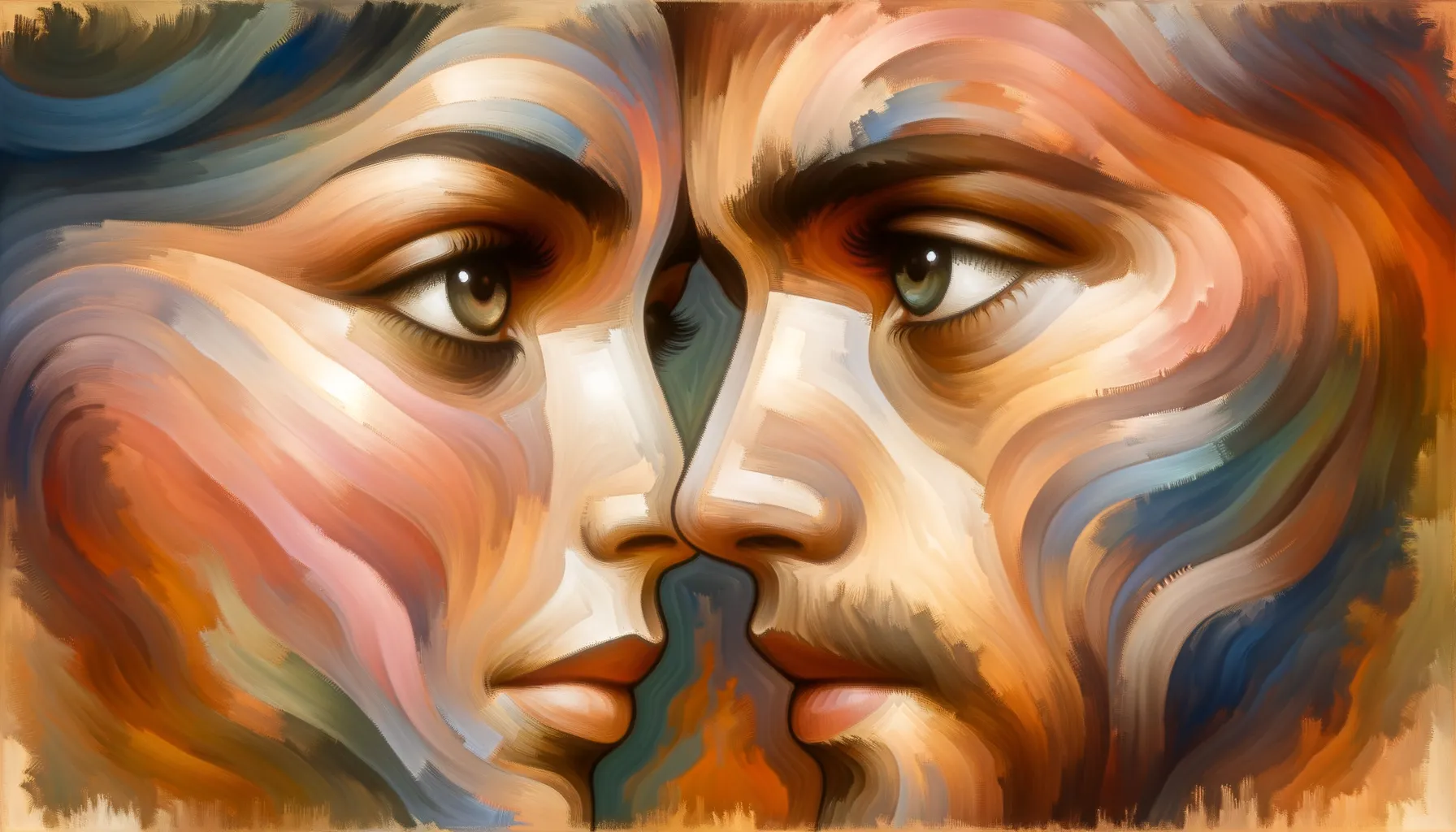
In the gentle hues of connection, eyes meet and speak volumes, telling tales of affection without uttering a word—a visual symphony of love’s silent language.
Reading the Signals: What Prolonged Eye Contact Means
Within the tapestry of nonverbal communication, prolonged eye contact is a stroke of bold color, a signal that can be interpreted in myriad ways depending on the context. In the delicate arena of romance, such a gaze often translates to a clear interest, an invitation to delve deeper into the connection. It’s as if the eyes are saying, “I am here with you, fully present, captivated by your essence.”
In professional or Platonic settings, however, this same extended eye contact may convey different meanings—respect, attention, or even a challenge. It’s the subtle interplay of other bodily cues that ultimately clarifies the intent. But when it comes to matters of the heart, a sustained look can be the silent overture to a burgeoning romance, hinting at the desire to move beyond the superficial and into the realm of intimacy.
As we consider the significance of this powerful gesture, let’s turn our attention to the fine line between intensity and comfort in eye contact—a balance that can make all the difference in the world of relationships.
The language of the eyes is one of the most powerful forms of communication. It speaks of emotions and desires that words can only attempt to describe.
The Fine Line Between Intensity and Comfort
Striking the right chord with eye contact is akin to composing a symphony—too much intensity, and you risk overwhelming the audience, too little, and you lose the melody of connection. Comfortable eye contact is the sweet spot, a harmonious blend that invites warmth and trust without crossing into the realm of discomfort. It’s the gentle ebb and flow of looking and looking away that signals respect for the other’s space and comfort.
Imagine it as a dance where each partner is attuned to the other’s rhythm, neither rushing forward too boldly nor retreating too quickly. This dance of gazes creates a safe space for vulnerability and establishes a mutual understanding that paves the way for deeper emotional intimacy. It’s about finding the tempo gusto—the right speed of sharing glances that says, “I see you, I respect you, and I am interested in the story your eyes are telling.”
As we continue our exploration of nonverbal cues, let’s delve into the subtle art of touch and its profound implications for conveying attraction and building connections.
The Subtle Art of Touch: Interpreting Physical Connections

In the intricate dance of human connection, touch is the whispered secret that can often speak louder than any word. It is a fundamental aspect of body language that, when used with care, can convey a plethora of emotions, from comfort and compassion to desire and passion. The power of touch in attraction is not to be underestimated—it is a primal, yet profoundly human, means of communication that transcends cultural barriers.
Consider the electric jolt of a fleeting brush of fingers, or the comfort found in a reassuring pat on the back. These are not mere physical interactions; they are expressions of trust, interest, and, at times, burgeoning affection. In the context of attraction, touch becomes even more nuanced, with every handshake, hug, or accidental collision carrying potential subtext.
As we explore the subtle art of touch, remember that the language of touch must always be spoken with consent and awareness of boundaries. In the following sections, we will decode the types of touch and their varied meanings, as well as the intricacies inherent in physical connections that can signal the silent, magnetic pull of attraction.
- Light, fleeting touches often suggest initial interest or a tentative invitation for further interaction.
- A firm, warm handshake can convey mutual respect and a solid foundation for a potential relationship.
- Accidental touches that are left to linger may hint at a desire to escalate closeness and gauge the other’s reaction.
- Playful nudges or gentle teasing touches signal comfort and a level of familiarity that often accompanies attraction.
- Protective touches, such as guiding the small of the back or a gentle hand on the arm, indicate a sense of care and possibly possessiveness.
- Comforting touches, like a hand on the shoulder or a warm embrace, suggest a deeper emotional bond and empathy.
- Synchronized movements in touch, mirroring the other person, often reflect a harmonious connection and shared feelings.
- Reciprocal touch, where both parties engage in similar patterns of contact, is a strong indicator of mutual attraction and interest.
The landscape of touch is a complex one, where the same gesture can whisper different things in different ears. Interpreting physical connections is an art form that requires one to read the context as much as the contact itself. A touch can be a question mark, an exclamation point, or a period—ending or beginning sentences in the story of a relationship.
Take, for instance, the reassuring squeeze of a hand during a moment of vulnerability—it can be a powerful affirmation of support and a signal of deep emotional connection. On the other hand, the same gesture in a different scenario might simply be a friendly gesture. The nuance lies in the timing, the pressure, and the duration; each element adds a different shade of meaning to the act.
As we navigate the realm of physical connections, we must be attuned to the silent conversations taking place through the medium of touch. These tactile dialogues can be laden with intent and emotion, often serving as the truest expression of our feelings before our minds have had the chance to put them into words. In the next section, we’ll explore the romantic implications of seemingly casual touches and how they can speak volumes about the silent language of love.
Casual Touches and Their Romantic Implications
In the subtleties of human interaction, casual touches may appear insignificant at first glance, but they often hold a trove of romantic potential. A brush of the arm, a light pat on the back, or an incidental nudge can be laced with the electricity of unspoken attraction. These small, seemingly innocuous gestures can be the first tentative steps on the journey to deeper intimacy.
What makes these casual touches so significant is their ability to communicate interest without the pressure of overt advances. They are the physical equivalent of a flirtatious glance—a way of saying, “I’m drawn to you,” with a subtlety that respects the delicate pace of relational development. In this light, every touch is a word in the language of romance, a word that can begin the conversation of attraction or add depth to an ongoing narrative.
As we delve into the nuances of touch in the next section, consider how casual contacts can become the cornerstone of a profound connection, building a bridge between two individuals seeking common emotional ground.
Touches weave the subtle threads of our interactions into the tapestry of intimacy, turning the common into connections profound.
Respecting Boundaries: Understanding the Unspoken Rules
At the heart of any physical interaction lie the unspoken rules of boundaries. These are the invisible lines that govern the appropriateness of touch, dictated not only by societal norms but also by individual comfort levels. In the realm of attraction, respecting these boundaries is paramount; it’s a testament to one’s empathy and understanding of consent.
Reading body language and being receptive to verbal and nonverbal cues is essential in gauging whether a touch is welcome. A flinch, a step back, or a subtle tensing of the body can all signal discomfort. On the flip side, a reciprocal gesture, a leaning in, or a relaxed posture can indicate a green light. The key is to proceed with sensitivity and respect, ensuring that each step forward is matched with the other person’s willingness to do the same.
In the following sections, we’ll explore how the expressions of our hearts—smiles, laughs, and gestures—add another layer to the rich tapestry of attraction and connection.
Expressions of the Heart: Smiles, Laughs, and Gestures
In the silent film of attraction, smiles, laughs, and gestures play the leading roles, portraying emotions with a clarity that transcends words. A smile, in all its simplicity, can be a beacon of warmth and openness, inviting connection. Meanwhile, laughter serves as a symphony of joy, often creating a shared experience that can bridge the gap between two hearts. Gestures, from a tilt of the head to an open palm, are the punctuation marks of this nonverbal narrative, emphasizing points and leading the way through conversational paths.
These expressions are the colors with which we paint our emotional states for the world to see. They can be as revealing as they are concealing, offering glimpses into genuine feelings or masking true thoughts beneath a veneer of social niceties. Understanding the interplay between these physical manifestations of emotion and the contexts in which they appear is crucial to decoding the language of attraction.
As we delve deeper into the nuances of these expressions, we will uncover the truth behind the smiles we share and the laughter that echoes between us, revealing the unspoken words of affection and interest.
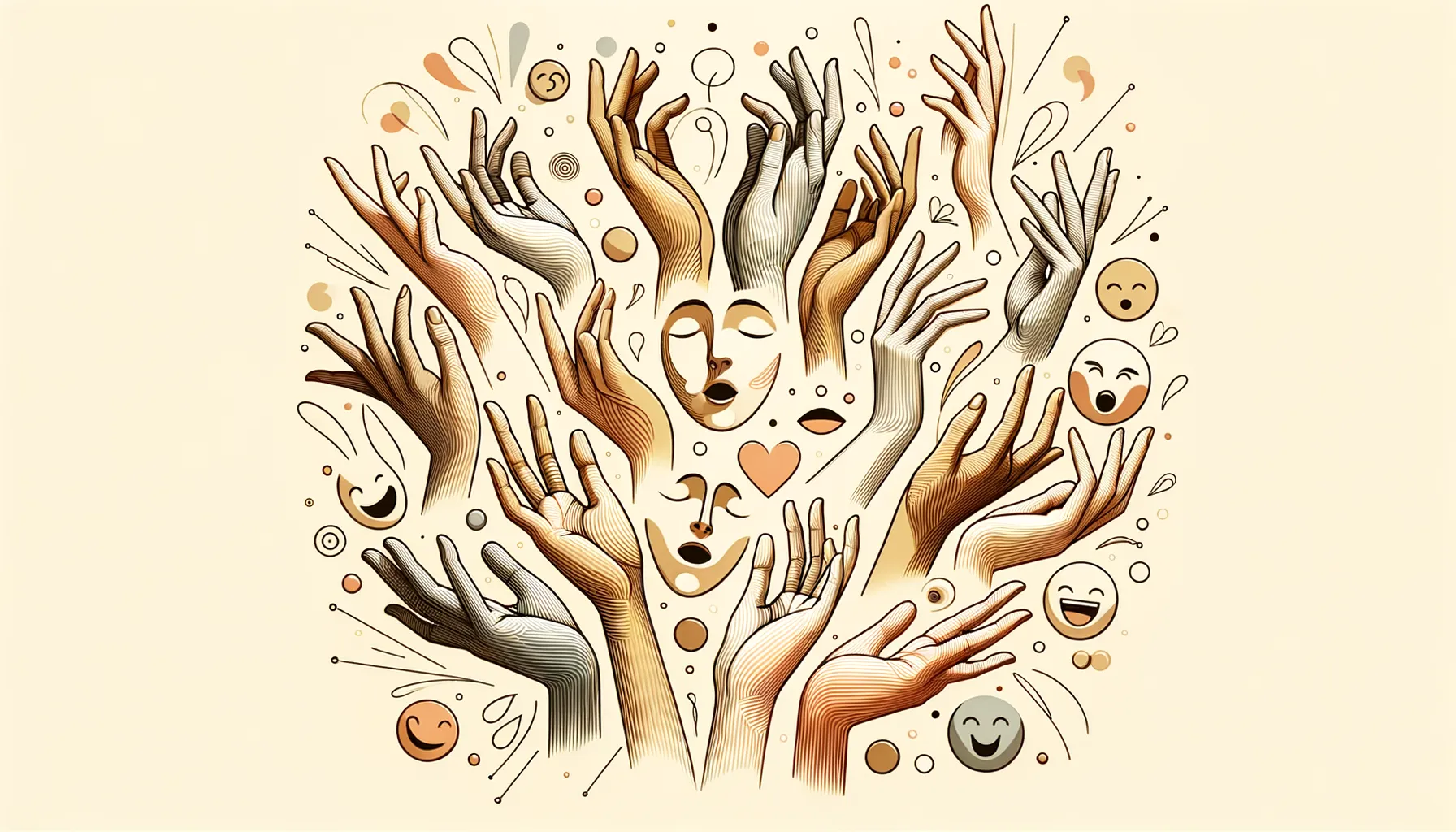
The Truth Behind His Smile: Genuine Happiness or Polite Facade?
In the delicate interplay of facial expressions, the distinction between a genuine smile and a polite facade is often found in the subtle choreography of facial muscles. A true smile, also known as a Duchenne smile, reaches the eyes, crinkling the corners and lighting up the face with an unmistakable glow of authenticity. It’s an unguarded, spontaneous reaction to joy or amusement—a window into the soul’s true contentment.
Conversely, a polite smile typically involves only the mouth, a controlled gesture that maintains social grace without the depth of genuine merriment. It’s a skillful performance, one that keeps the observer at arm’s length, revealing courtesy but concealing true emotion.
As we peel back the layers of these smiles, we gain insight into the intentions and feelings of those we interact with, sharpening our ability to discern the real from the rehearsed in the unfolding drama of attraction.

Laughter in Love: How Humor Builds Bonds
Humor and laughter are not merely the soul’s medicine; they are also the glue that binds relationships. When shared, a joke or a humorous observation becomes a private language, a secret handshake of the heart that signals a shared perspective on the world. Laughter, in its boisterous or soft forms, creates ripples of connection, often leaving an indelible mark on the fabric of a relationship.
It’s in those shared moments of mirth where barriers dissolve, leaving individuals more open and connected. Laughter can act as a smoothing stone, softening the edges of stress and conflict. In laughter, we find a mutual surrender to the moment, a joint celebration of life’s absurdities that can make companionship even sweeter.
As we consider the unspoken dialogue of posture and positioning in the dance of attraction, let’s not forget how the light-hearted interludes of laughter can deepen the steps of this intricate tango.
Laughter is the shortest distance between two people. It bridges gaps and builds worlds where hearts can meet and mingle.
The Unspoken Dialogue of Posture and Positioning
As silent narrators of our innermost sentiments, posture and positioning are powerful indicators of attraction, often speaking volumes without uttering a single word. The way we stand, the direction we lean, and even the proximity we maintain are all chapters in the story our bodies tell.
An upright posture with an open stance can signal confidence and interest, inviting interaction, while a closed-off position might imply discomfort or disinterest. Leaning in subtly during a conversation denotes engagement and a desire to close the distance between two individuals. Conversely, leaning away might be a sign of a need for personal space or a lack of connection.
Consider how positioning oneself to face another person directly, even in a group setting, can indicate that one is the focus of attention and interest. These nonverbal cues are vital components in the orchestra of body language that choreographs the dance of attraction. In the following sections, we will dissect these movements—the dance of synchronization and the subtleties of body orientation—as we continue to decode the unspoken dialogue that underpins human connection.

Mirroring Movements: The Dance of Synchronization
The dance of mirroring movements in human interaction is a subtle yet profound display of rapport and attraction. When two people unconsciously adopt similar postures, gestures, and movements, it signals a synchrony that transcends conscious thought. This mirroring reflects a harmony of mindsets, a sign that each individual is attuned to the other’s emotional rhythm.
Whether it’s tilting heads in unison, matching the pace of a walk, or echoing a hand gesture during conversation, these mirrored actions foster a sense of connection and understanding. It’s as if our bodies are engaged in an intimate waltz, led by the silent music of mutual interest and compatibility.
As we move forward, we’ll examine how body orientation further reveals the magnetism of affection, adding another layer to the intricate nonverbal dialogue that defines the human courtship.
In the silent dance of interaction, it’s the mirroring of movements that speaks loudest on the stage of connection.
Body Orientation: Subtle Signs of Affection
Body orientation is a compass that points to where the heart’s affections lie. Even in a crowded room, the way one angles their body towards someone can be a silent confession of interest. This gravitational pull can manifest in the subtle pivot of the shoulders, the direction of the feet, or the tilt of the head—all aligning towards the object of one’s affection as naturally as a sunflower turns to face the sun.
While words may be measured and guarded, the honest axis of our bodies often reveals the truth of our inclinations. When we angle ourselves towards another, it’s as if we are subconsciously creating a private space within the public sphere, a small universe where the connection can flourish undisturbed.
Next, we will discover the compelling science of pupil dilation and its undeniable link to the language of attraction, a physiological reaction that can unveil the depths of our interest.
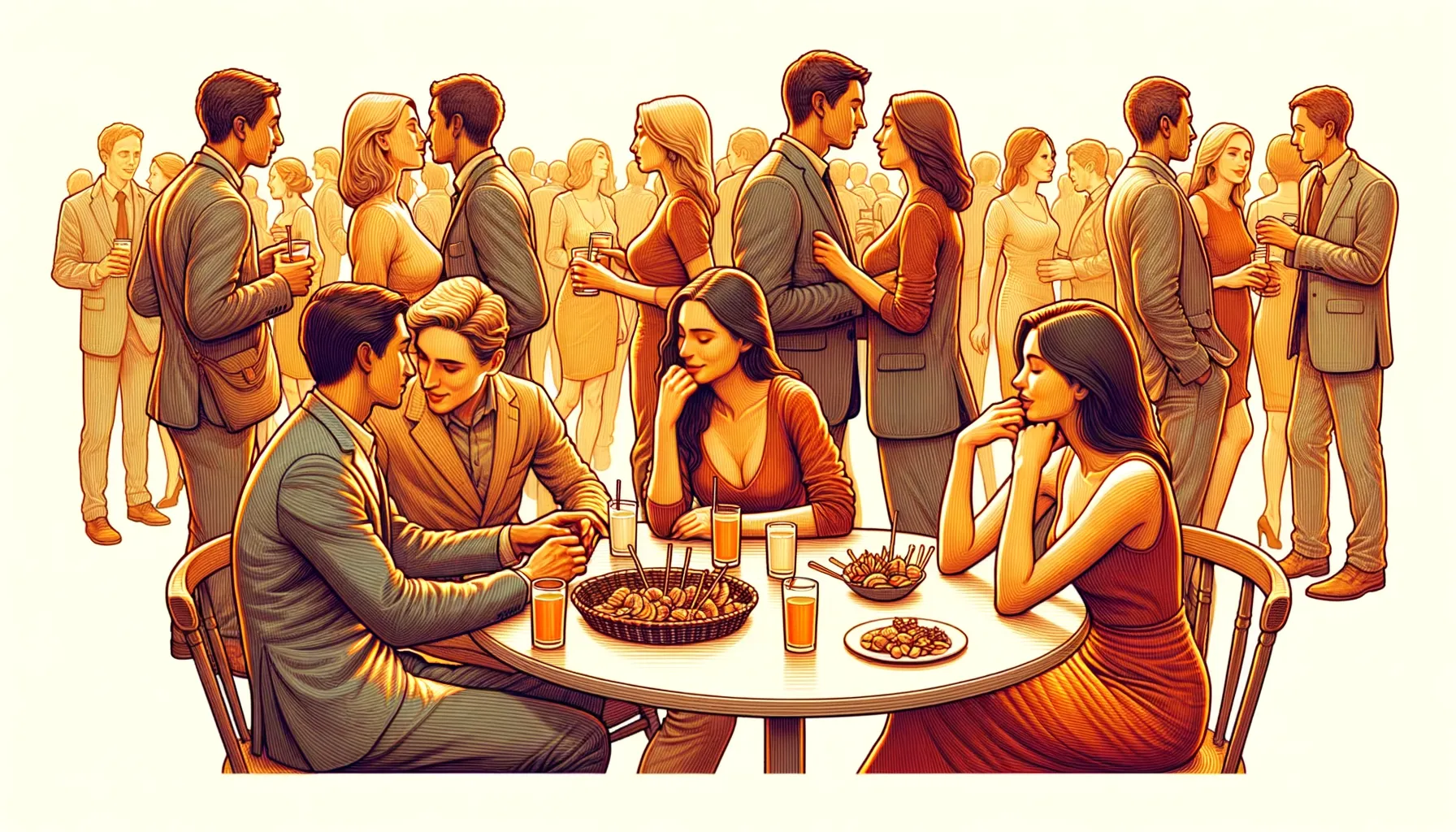
Pupil Dilation: The Eyes Tell More Than Words Could
Within the windows of the soul, pupil dilation serves as a subtle beacon of allure, an involuntary response that signals attraction. This phenomenon, rooted in the autonomic nervous system, occurs when emotional arousal causes the pupils to dilate. It’s the body’s way of allowing more light in, which metaphorically and physiologically can mean ‘seeing’ the object of one’s affection more clearly.
Scientifically, this dilation is a part of our sympathetic response—often associated with the ‘fight or flight’ instinct—but in the context of attraction, it’s less about survival and more about visual attention. When we are captivated by another person’s presence, our pupils unconsciously expand, making the eyes appear larger and more inviting. This response is not only a sign of emotional excitement but also enhances our ability to read and interpret the subtle cues being conveyed by the other person.
In our exploration of this involuntary reaction, we’ll delve into the specifics of pupil response and its implications in the delicate dance of human attraction.
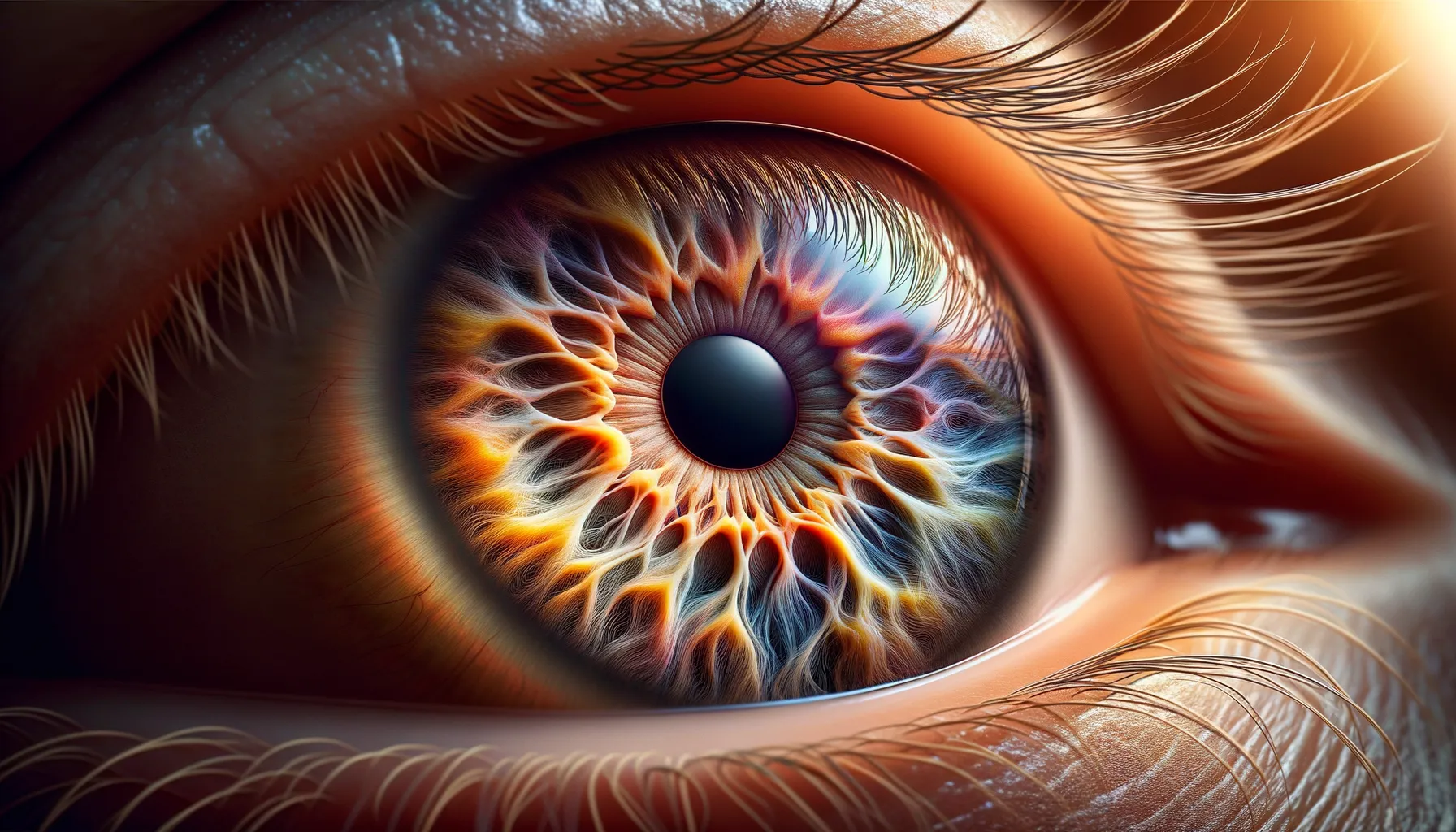
The Science of Pupil Response in Attraction
The interplay between our emotional state and physiological responses is a fascinating study, particularly when examining pupil response to attraction. The science is striking in its clarity: when we encounter someone who piques our interest, our sympathetic nervous system kicks into gear. This response, often associated with excitement or stress, triggers a release of neurotransmitters that prompt pupil dilation.
It’s an evolutionary trait that enhances our ability to gather visual information about the person we’re drawn to. By dilating, our pupils allow more light to enter, giving us a better view of our potential mate and their expressions—a biological advantage in the intricate game of selection and bonding.
This involuntary eye response is a genuine, uncontrollable reaction to attraction, providing a unique glimpse into the depths of human desire and interest.
Pupil dilation is an involuntary tell that speaks volumes about one’s interest—it’s like the heart whispering through the eyes.
Eye Contact and Emotional Connection
The nexus between eye contact and emotional connection is both profound and intimate. Gazing into another’s eyes can act as a conduit for conveying complex emotions and fostering a deep sense of closeness. It’s a form of silent communication that can whisper secrets of the heart without a word being spoken.
This visual engagement is not merely about sight—it’s about perception, the recognition of another’s essence. It’s the difference between looking and truly seeing. When we lock eyes with someone, we are inviting them into a vulnerable space, offering a glimpse into our inner emotional landscape. In return, we seek to understand and be understood on a level that transcends verbal language.
The power of sustained eye contact can bridge emotional distances, creating a shared moment that is both personal and profound, underscoring the significance of visual connections in building lasting relationships.
Frequently Asked Questions About Body Language and Attraction
How can eye contact indicate someone’s romantic interest?
Eye contact conveys romantic interest through prolonged, intentional gazes that signal desire and build intimacy, often accompanied by dilated pupils and a softening of the eyes.
What facial expressions typically suggest a man is attracted to a woman?
A man’s attraction to a woman is often betrayed by genuine smiles, raised eyebrows, and an overall softening of his facial features, signaling openness and interest.
Can the tone of someone’s voice reveal their feelings of attraction?
Voice tone can indeed reveal attraction, often evidenced by a lower pitch, gentle cadence, and an overall warmth that suggests a deeper level of interest and affection.

